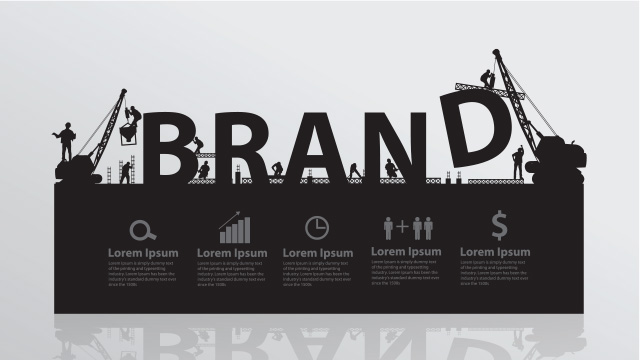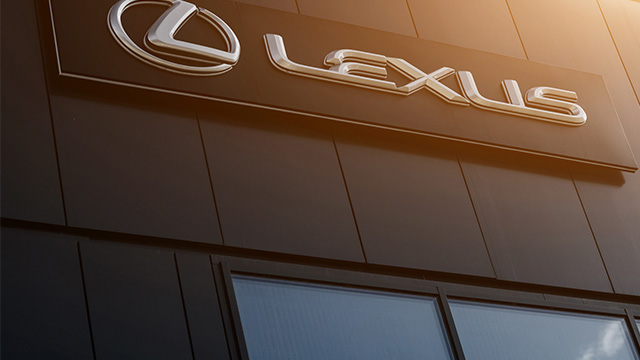What Is Mixed Branding? Types, Benefits & Examples Explained
What Is Mixed Branding? Types, Benefits & Examples Explained

For many people, the concept of mixed branding only exists in business school lecture halls. However, a number of sizable businesses have successfully used this branding technique to grow their customer base without having to start from scratch with a new brand.
This detailed blog will discuss what is mixed branding in the industry and highlight major instances when businesses successfully used these strategies to broaden their consumer appeal.
First Things First, What Is Mixed Branding?

It is a creative marketing strategy in which two or more brands collaborate to advertise the same product to several consumers. This makes it possible for specific brands to connect with a larger audience, increasing their visibility and brand recognition in the process.
Businesses may decide that a particular audience segment is not a good fit for their brand identity. In this situation, such companies may discover it beneficial to collaborate with or create a different brand in order to advertise their products more successfully.
Customers frequently have no idea that they are purchasing the same products
from the same business. Nevertheless, the secondary brand successfully matches consumer preferences to make some items more appealing to new markets.
Common Types of Mixed Branding
The fact that numerous manufacturers create both the corporate-brand product and its value-brand equivalent is frequently unknown to consumers.
1) Sub-Branding
Organizations frequently develop sub-brands to appeal to a particular sector of their target market. Even though the items have little to no fundamental differences, a manufacturer may use one brand to target prospects with high incomes and another to appeal to middle-income consumers.
2) Private Label Branding
Another method of mixed branding develops when manufacturers create brands that are sold exclusively in specific retail outlets but do not carry the retailer's name. This "private label" branding allows manufacturers to place many different products under the same brand.
3) Co-Branding
Businesses with similar products frequently collaborate to promote their unique brands. Customers who are devoted to one brand over another can witness for themselves how the items perform together thanks to this "co-branding" strategy.
4) Store Branding
Creating store brands is one strategy manufacturers use to forge connections with retailers. Although the products are made by the manufacturer, the branding features the name of the retailer.
Read Also: Types of Branding with Examples
Major Examples of Mixed Branding
We can learn more about how successful companies have included mixed branding into their overall marketing strategies by looking at some examples of it. Here are some of the world's top examples of mixed branding in action from businesses.
1- Lexus and Toyota

Toyota and Lexus are another frequently referenced example of mixed branding. This example uses the mixed branding "sub-branding" technique once more. Toyota is a significant automaker with a reputation for offering a wide range of automobiles, from sedans to trucks.
Toyota attracts a huge range of people, although it typically positions itself as a cost-effective, useful, and appealing choice for the "average" client. The customers Toyota might wish to attract in the premium market are turned off by this personality.
There are no references to cost or family life in the "Lexus" sub-brand, which is bursting with sophistication and style.
Toyota can appeal to two distinct groups with competing goals and preferences thanks to its "mixed branding" strategy. Ford, Nissan, and other automobile companies have all utilized this tactic in the past.
2- Xbox and Microsoft

One of the most well-known examples of mixed branding is this co-branding combo, and with good reason. Because Microsoft and Xbox executed their approach so successfully, many of their customers now view the two brands as interchangeable.
Microsoft's need to shed its reputation as a purely businesslike, serious firm led to the development of the Xbox. With the help of the Xbox, they were able to demonstrate to the world that they were also capable of developing cutting-edge gaming technology.
The result of their later mixed branding strategy is that Xbox gains from the goodwill of their parent firm, while Microsoft's brand image remains unharmed and they continue to produce powerful professional computers.
3- Adidas and Kayne West

Kayne West's collaboration with Adidas is among the most significant examples of mixed branding ever. Together, the two companies created the well-known streetwear fashion collaboration known as "Adidas Yeezy."
This co-brand was able to lower barriers to brand collaboration and open the door for future collaborations by fusing Kanye West's standing as a successful rapper with Adidas' accessibility and broad client base.
Customers flocked to buy Adidas Yeezy's items because they believed the brand embodied the qualities they sought in a business. For example, the Cloud White Yeezy 450 sold out in under a minute, making them among one of the fastest sneaker models ever to sell out.
Amazing Benefits of Mixed Branding

Now you know what is mixed branding. Well, when you're first starting out in your field, even if you find the ideal logo, brand, and personality for your target audience, there's no assurance those assets will still have the right appeal as your company expands.
Organizations with mixed branding have more freedom to change their brand's personality and image to correspond with various target markets and marketing plans.
The main advantages are as follows:
Broader Reach
Companies can use mixed branding initiatives to increase their chances of interacting with the right people while trying to reach a new target demographic.
It is simpler for businesses to engage with different consumer groups without sacrificing their intellectual property thanks to a variety of mixed branding tactics.
Read Also: Top Marketing Channels That Your Brand Needs to Focus On
Flexibility
A mixed branding strategy can provide your company more freedom to diversify into additional product and market segments without being constrained by your core brand.
Without surrendering the advantages of having a pre-established brand and business model, you can interact with new customers.
Increased Perceived Value
When employing a mixed branding approach, brands that specialize in selling products at low price points frequently experience this benefit.
These businesses can identify their items with value by partnering with a company that frequently sells pricey or high-value goods, which encourages their own customers to do the same and be prepared to pay more for them.
Earning Potential
Companies can use mixed branding initiatives to increase their chances of interacting with the right people while trying to reach a new target demographic.
It is simpler for businesses to engage with different consumer groups without sacrificing their intellectual property thanks to a variety of mixed branding tactics.
FAQs
What Is a Real-World Example of Mixed Branding?
There are many real-world examples of mixed branding. One effective example of retail branding is the cooperation between Michelin and Sears Tires. A major chain retailer is included in the brand alliance with the help of the specialist branding method known as “store branding”.
While Michelin produces and markets tires under its own brand, it also permits Sears, a major retailer, to brand Michelin tires with its logo. Customers who purchase "Sears-brand" tires at a Sears Auto Center are actually buying Michelin tires that are branded with the Sears name.
Mixed Branding Vs. Co-Branding: What’s The Difference?
The main difference between mixed branding and co-branding is that: consumers can choose between manufacturer, private distributor, and generic brands when using a mixed brand approach. In the production of a good or the provision of a service, co-branding merges one or more brands.
Can Mixed Branding Work for Small Businesses?
Yes, mixed branding can work for small businesses. By offering a mix of products or services under different brand names, a small business can cater to a wider range of customers and appeal to different market segments.
However, it is important for small businesses to carefully consider their brand strategy and ensure that the different brands they offer are complementary and do not cannibalize each other's sales.
Is Mixed Branding Suitable for Businesses in Every Industry?
No, mixed branding may not be suitable for businesses in every industry. Some industries may require a more focused branding strategy to establish a clear brand identity and build customer loyalty. In such cases, offering a mix of products or services under different brand names may create confusion among customers and dilute the brand's overall value.
Can Mixed Branding Help Businesses Expand into New Markets?
Yes, mixed branding can help businesses expand into new markets. By offering a mix of products or services under different brand names, a business can appeal to different market segments and broaden its customer base. This can be particularly useful when entering new geographic markets or introducing new product lines that may require a different brand identity.
What Are Some Common Mistakes Businesses Make When Implementing Mixed Branding?
Common mixed branding mistakes that businesses make include creating brand confusion among customers, cannibalizing sales between different brands, diluting the overall brand value, and overextending resources to manage multiple brands.
To avoid these mistakes, businesses should carefully plan their branding strategy and ensure that each brand aligns with the overall business goals and values.
Final Word
By far, you probably have a complete idea about what is mixed branding. Mixed branding strategies can provide guidance for businesses attempting to enter a new industry or engage with an audience that appears to be difficult to reach.
Many businesses can engage with new clients by using targeted mixed branding strategies without forgoing the advantages of their established brand and existing, devoted customers.
Hence, businesses can put together innovative strategies that will benefit their operations by patterning mixed branding initiatives after the achievements of Microsoft, Michelin, and Toyota.
We have some creative ideas for your brand; let’s discuss them today.
